In 1986, I went running in Jerusalem with a friend who ran 45–50 minutes every day during his lunch hour. I was exhausted after 20 minutes and eventually took the bus back to the Arab Thought Forum, the non-governmental organization in East Jerusalem for which we both worked at the time. That was the beginning and end of my running experience in my early twenties. It was not until 2013, a few months after I turned 50, that I took up running again.
On 1 November 2015, I did something I never thought I would ever be able to do: I finished the New York City (NYC) Marathon. It was my first marathon, and as I crossed the finish line, I told myself that it would be my last. I knew that running 26.2 miles (42.2 km) would be exhausting, but it was much more taxing on the body and mind than I had anticipated, and I vowed never to repeat it.
For me, finishing the Marathon was not an end in itself. When I completed high school, I received a scholarship from the United Nations Relief and Works Agency for Palestine Refugees in the Near East (UNRWA). The scholarship was greatly appreciated in my family of six children, as by the time I finished high school, three of my siblings were university students. For Palestine refugees, providing their children with education is the most valuable investment they can make. Families will sacrifice much to ensure that their children finish school and, if possible, attend university and obtain the highest degree they can. Over the years, the number of scholarships provided by UNRWA to Palestine refugees has declined, and it is contingent on donor contributions. As a former beneficiary of the programme, I decided to do my part to help needy students finish the university degree that they dream of and that their families pray night and day they are able to obtain.
I became a member of the New York Road Runners organization, bought running shoes and ran my first 4-mile race in Central Park in April 2013. Since then, I have run around 30 other races, including three half-marathons, one full marathon, five 10-kilometre races and the rest mostly 4–5 mile events. When you run a race, you can’t help but be swept up in the energy and zeal of the thousands of runners around you. Rain or shine, runners of all ages and abilities line up and eagerly await the start gun before taking off at different speeds and in varied styles. For the majority of runners, the goal is to finish and maybe achieve a personal best for that distance. For me, the races were also incorporated into the training programmes for half-marathons or the NYC Marathon. They provided me with great motivation to stick to the training and were a change from solitary runs along the East River, in Central Park or on the treadmill. Races also provide a means to obtain guaranteed entry in the following year’s Marathon. You meet other runners and hear about their goals and aspirations and, in many cases, the causes for which they are raising funds, such as cancer research, a neighbourhood charity or the United Nation’s Children’s Fund (UNICEF).
In 2014, three colleagues, having heard about my new interest in running, approached me about joining a race called Run 10 Feed 10, which was scheduled for 21 September of that year. The race enabled each runner to select their own cause for which to raise funds. I opted to raise funds for the UNRWA emergency appeal for Gaza to help feed 10 families for a month; $1080 would provide a family with basic monthly food supplies. While I did not meet my initial target, I was able to raise $5,350, enough to feed 5 families for a month. With that experience in mind, and as I started training for the NYC Marathon in June 2015, I set up a fundraising page on a crowdfunding platform and shared it through Facebook and by email with family, friends and colleagues. I provided regular updates on my training and the funds raised over the weeks. I am grateful for the enormous support and encouragement I received. Every time I almost gave up on going out for a training run because I was too tired, or it was too hot or too cold, I would recall the number of contributions made on my fundraising page and the heart-warming messages sent by those who fully supported my cause. I would then put on my running shoes and do my assigned run for that day. Had I not connected my run to a fundraising goal and received such overwhelming support, I would not have run 500 or so miles in the 20 weeks leading up to the Marathon, or been able to finish the Marathon itself. Committing to a goal that affects the lives of others was key to pushing myself to find the time and energy to run 25–30 miles a week.
During the 20 weeks of marathon training, I raised $29,000. Thanks to the support and generosity of family, friends and colleagues, Yasmin, Nour and Warda have each received a scholarship that will cover tuition for four years of university education. Yasmin is studying English Language and Literature at Birzeit University near Ramallah and Nour is studying English Language at An-Najah National University in Nablus. Warda is studying to be a teacher at Al-Aqsa University in Gaza. The three young women achieved grades of between 96.6 and 97.6 per cent in the Tawjihi (secondary school leaving exam) taken by all graduating high school students in Palestine. A fourth scholarship could not be granted, as UNRWA requires donors to secure $8,000 to cover tuition for four years of study and I remain $3,000 short.
In preparation for the NYC Marathon, I enrolled in an online training programme, joined a Facebook group of programme participants and asked those I knew who had previously run a marathon for advice on topics such as the best running shoes to buy, what to wear for the race, the best time of day to train, the best hydration and fueling techniques, what to eat the night before a marathon, and how to stay focused and motivated. Of course, everyone mentioned “the wall”—the point at which your body and mind want to quit the race and the urge to stop becomes overwhelming. “The wall” usually hits between the twenty-first and twenty-third miles, which is the distance of the longest training run before a marathon. When I ran the NYC Marathon, I was surprised that while everyone spoke about “the wall”, nobody mentioned “the hedge” at mile 14, or “the fence” at mile 18 or worse still, “the ditch” at mile 25, which drags you down. When you reach “the ditch”, you really have to force yourself to finish that final mile and that most-hated 0.2-mile stretch along Central Park West leading to the finish line in the Park.
By finishing the 2015 NYC Marathon, I completed the “9+1” programme—nine races and one volunteer opportunity—required to qualify for the following year’s race. So, when the email arrived from New York Road Runners, I did not hesitate to register to run the 2016 Marathon. As I did in 2015, I will soon start raising funds for more scholarships in Palestine. I hope to break last year’s record and enable more deserving young women and men to achieve their aspiration to attend university.
LR/PR



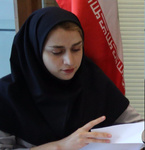
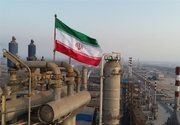



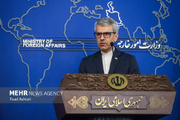

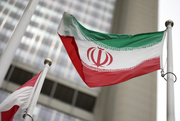



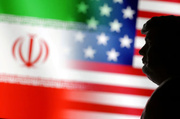
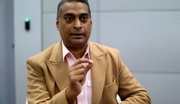









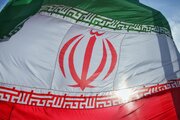
Your Comment